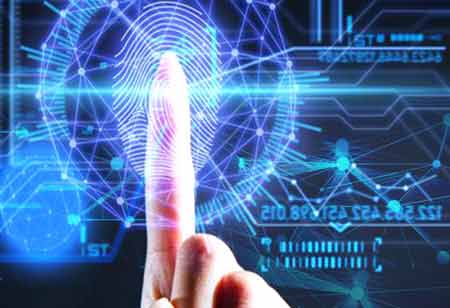THANK YOU FOR SUBSCRIBING
Be first to read the latest tech news, Industry Leader's Insights, and CIO interviews of medium and large enterprises exclusively from Gov CIO Outlook
THANK YOU FOR SUBSCRIBING

By
Government CIO Outlook | Thursday, December 05, 2024
Stay ahead of the industry with exclusive feature stories on the top companies, expert insights and the latest news delivered straight to your inbox. Subscribe today.
Climate change, political violence, and economic inequality contribute directly to people moving across borders. These situations are only going to get worse as time goes on. Governments should use innovative technology to enhance protection and aid those in need rather than spending all their resources on defense.
FREMONT, CA: In the increasingly globalized world, where terrorist risks are rising, border services must continually face new problems. Greater ease of international trade generates security holes through which unauthorized conduct can occur. Human trafficking and illicit transcontinental businesses are fundamental problems today, and governments worldwide are attempting to adapt to the changing demands.
Threats on a global scale are met with equally sophisticated countermeasures. Border authorities are rapidly adopting new technology that relies on recent technological advances. Everything from improved biometrics at airports to unanticipated Internet of Things applications can be used to secure borders and introduce new dangers.
Innovative Technologies For Border Protection
Today's "wall" no longer merely resembles a brick-and-mortar construction that poses a challenge. Immigration regulations today are influenced by many complex, interwoven criteria, such as health status, mode of transportation, and a tangled web of bureaucratic procedures, which can vary depending on the political party in power at any given time.
Today's intelligent border security systems rely on interconnected technology, including drones, mobile apps, AI, and IoT sensors.
While some of these issues (such as health status) have long influenced immigration policies (consider the rudimentary health checks and quarantine hospitals for incoming immigrants at Ellis Island in the 19th century), today's digital world requires digital tools to accommodate the influx of goods and people.
Here are some specific technological advancements:
Surveillance drones
Drones, becoming increasingly prevalent in international border regions, enable border officers to monitor inaccessible areas. Drones can boost visibility, record geospatial locations and data, do data analysis, and even scramble data or interfere with distant signals. Drones can be designed to automatically clear cars that meet particular requirements, thereby expediting border traffic inspections.
Smart video monitoring
Intelligent security cameras can give border patrol officials increased monitoring capabilities. X-ray and infrared imaging can immediately warn border security officials of potentially suspicious cargo or persons at the border crossing. Smart video cameras with powerful analytic skills can detect suspicious activities or individuals based on a predetermined set of parameters.
Movement sensors
Smart movement sensors equipped with artificial intelligence can automatically detect the presence of humans crossing physical limits, even underground. These sensors can capture exact geospatial data to give border patrol officials location-specific data. These motion sensors can aid in detecting and preventing people trafficking, drug smuggling, and other illicit activities. Internet of Things sensors can communicate detailed cartographic maps to direct agents to the precise location of a border crossing, enabling prompt response.
Smart kiosks
Automated kiosks equipped with facial recognition technology, automatic passport scanners, and iris recognition can significantly improve the efficiency of traversing land, sea, and air checkpoints. A smart kiosk can eliminate the need for staff while simultaneously increasing the daily capacity of lawful border crossings by combining biometric scanners, smart cameras, X-rays, thermal imaging, and automated license plate readers. Health status, national identification cards, and current immigration status can all be identified automatically, along with any potential red flags that might alarm border patrol officials.
Check Out This: Top Immigration Law Firms
I agree We use cookies on this website to enhance your user experience. By clicking any link on this page you are giving your consent for us to set cookies. More info

However, if you would like to share the information in this article, you may use the link below:
www.govciooutlookapac.com/news/smart-technology-and-its-impact-on-border-security-nid-1807.html



